1930s Pennsylvania Revivals (18 revivals)
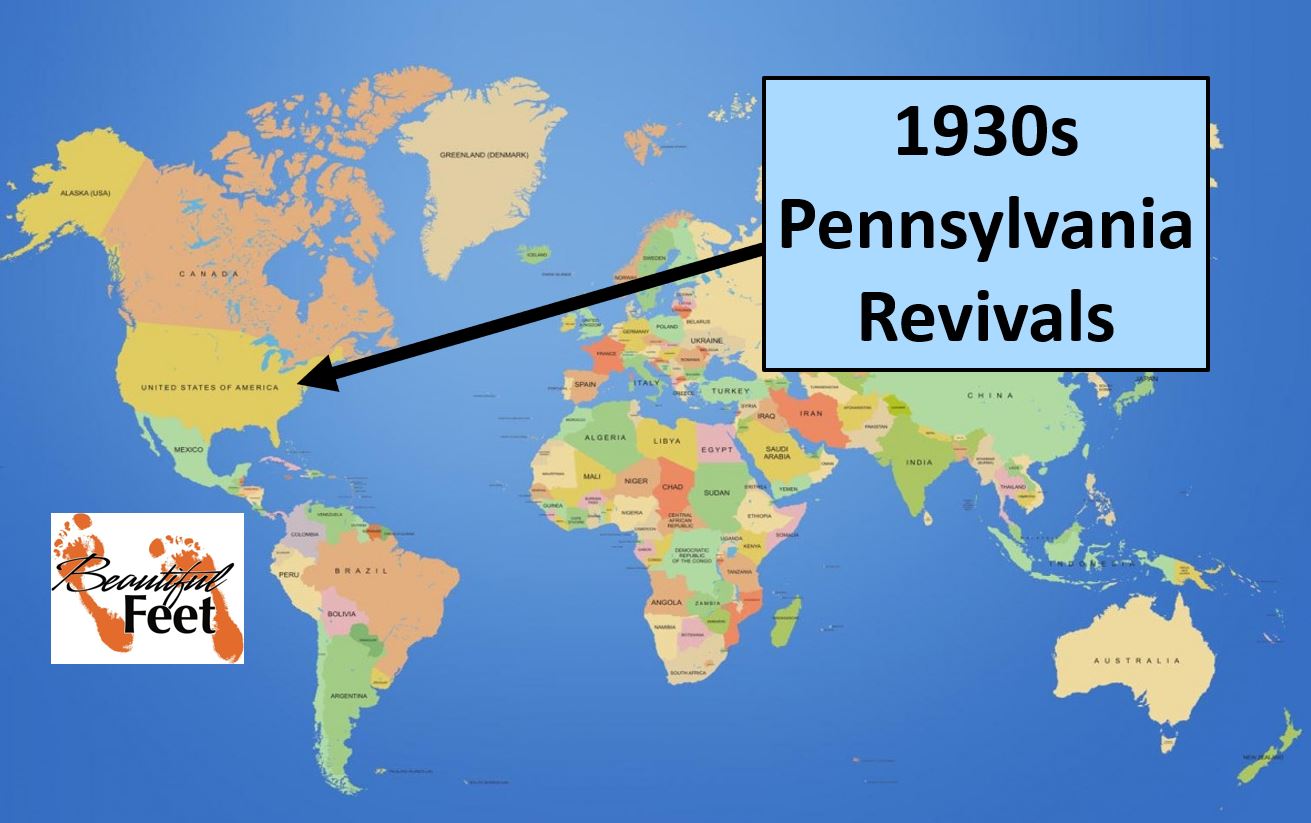
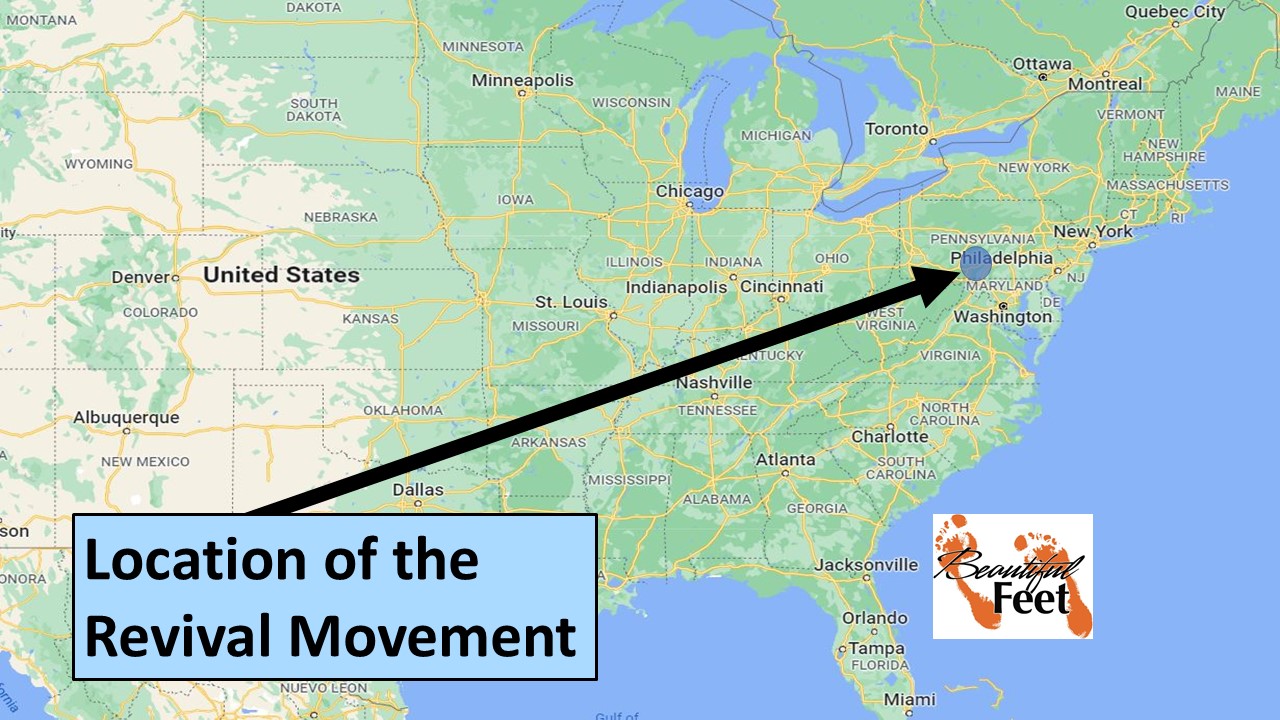
Introduction
The series of revival meetings reported on here occurred during the 1930s. The location was the southcentral area of Pennsylvania. The leaders of this spreading revival movement were the Brethren in Christ, who previously were known as the River Brethren, until their name change in 1861.
The River Brethren were initially part of the spreading Methodist movement among the Mennonites in Lancaster County, Pennsylvania, in the late 1700s and early 1800s. They were often in fellowship with the United Brethren during their meetings.
Additional information about the revivals of the United Brethren in Christ can be read with this link: 1800s United Brethren Revivals.
There were some unique doctrinal beliefs associated with the Brethren in Christ that often led to opposition from other churches in the areas where they were holding meetings. We will list a few of them here.
Plain and Straight
Though not Amish, the attire of the Brethren in Christ in the 1930s was “plain,” meaning they rejected worldly fashions, and the men often had beards with no mustaches, which was an effort to demonstrate their pacifism.
“Pray Through” to Achieve Salvation
The Brethren in Christ taught that to be saved one must “pray through” to achieve it, and that it wasn’t to be received merely by simple assent of one’s faith in Christ. The people were very emotional, in that they wouldn’t tell a person when they were saved, the person would tell them—as they would feel it. Some of the people would be found at the altar, weeping in agony, under severe conviction of sin, night after night, until they felt the burden of their sins lift. When the salvation experience was felt, it was then that great rejoicing would occur, accompanied with shouting, dancing, and often running.
Sanctification and Baptism in the Holy Spirit
Originating from a Wesleyan-holiness understanding of sanctification, the believers during these revivals were encouraged to pursue a “second work of grace,” which was sanctification. This was believed to keep “the believer clean from the defilement of a sinful world.” In addition, there was also the baptism in the Holy Spirit which the people were encouraged to pursue in prayer, and with it the speaking in tongues.
Conditions in the Mountains during the 1930s
The leaders of the revival movement listed the main sins that were predominant at the time, and they were embodied in:
► Gamblers (card players)
► Moonshiners
► Drunkards
► Thieves
► The immoral
► Horse jockeys
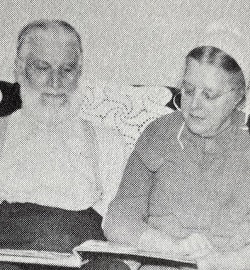
Rev. and Mrs. Herman Miller
Herman Miller and the Foundation to the Revival Movement
In 1920, at age 39, Herman Miller moved to Altoona, Pennsylvania, to start a mission (a church). His activity largely focused on jail ministry, providing for the unemployed, hospital visits, conducting funerals at no charge, etc.
This social work earned him and the workers at the mission quite a reputation. He was well-known for his holiness preaching, praying, and his “plain” style of clothing.
People would often stop at the 3-story mission home for prayer, which often led to their salvation. One of the workers at the mission told of a time when they were praying, and
Suddenly the Holy Ghost came upon them, and they had a real Pentecost, shouting, speaking in tongues, and rejoicing in the Lord.
It was at this same time that neighbors came, saying they saw the roof of the mission on fire. But it wasn’t a physical fire; it was like the fire that was seen resting on the heads of the 120 on the day of Pentecost (Acts 2:1-4).
People familiar with the Mission House said it was like stepping into the Book of Acts.
► Saints were shouting the praises of the Lord.
► Sinners were seeking God at the altar at every service.
► Many were coming to the mission every day for prayer.
► Dramatic healings were taking place. Some of which included healing of
…• Empyema
…• Goiter
…• Stomach troubles
…• Back problems
…• Hernia
…• Tuberculosis
Miller often held tent meetings on vacant lots and playgrounds in Altoona. Miller’s preaching was often accompanied by tremendous conviction of sin. One example was a woman who went to one of the tent meetings and afterwards asked some workers to pray with her in her home. She gives the following report of what occurred while she was being prayed for:
While kneeling beside our bed a great canopy of peace just settled down over my soul and I just laughed and laughed. What was I laughing at? I didn’t know until a few days later when I began to understand these great changes and I realized the work had been done.
The mission work of Herman Miller set the stage for what would happen during the coming decade and beyond.
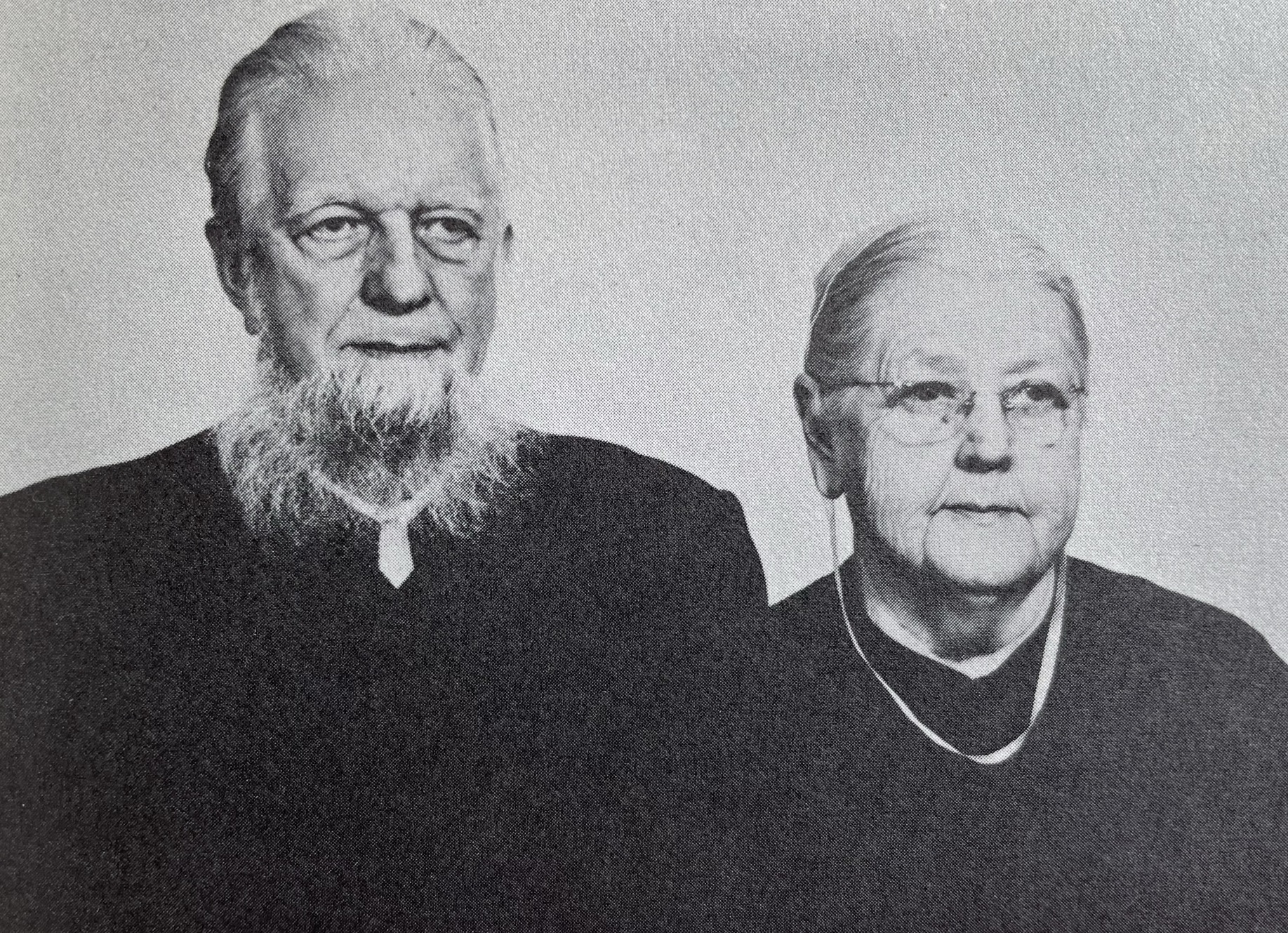
Rev. Harry and Minnie Fink
Harry and Minnie Fink
In May of 1927, the 40-year-old Harry Fink, a nominal Christian, attended one of Miller’s tent meetings in Altoona. It was there that both Harry and Minnie were converted. Frank gives this account of his salvation:
One night I was at home where I was praying, desperately seeking the Lord. I felt I was at an end, and I cried: ‘Lord, life or death, here I am.’ Then the Lord witnessed to me and I lay prostrate on the floor for three and a half hours.
Harry’s wife Minnie was converted not long after, and they both spent the remainder of their life conducting revival meetings all over the region, as well as over into Ohio.
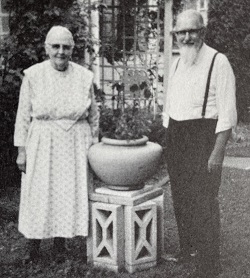
Rev. Roscoe and Lillian Ebersole
Roscoe and Lillian Ebersole
Like the Finks, the Ebersoles had been nominal Christians, and during revival services, Lillian was converted, to be followed by Roscoe not long after. They tell of their commitment to Christ by these lifestyle changes:
► Stopping the “fussing” in the home.
► Refusal to get “fixed up” using “powder and paint.”
► Choosing not to dress worldly, and wear only plain clothing.
► Wearing the “prayer covering” (Lillian).

Southcentral Pennsylvania: location of the revival movement
Finks and Ebersoles Unite for the Saxton Revival
Both the Finks and the Ebersoles felt the call of God into evangelistic ministry, and it led them to start a work at Salemville, Pennsylvania, in an unused schoolhouse. Not seeing their efforts have long-term success, and having received an invitation to come to Saxton to hold meetings in homes, they transitioned there, and the revival that occurred led to services being conducted nightly for over one year, with great success.
It was late summer of 1931 when this ministry team began meeting in Saxton homes. When the homes became too small, they began meeting outdoors 4 miles north of Saxton on a picnic ground, named Weaver’s Grove.
This location was nothing more than a cleared-out wooded area with an old shed, which didn’t have sides. They made benches out of logs and planks, hung some lanterns to use when it got dark, and started their meetings.
Their advertisement consisted of a white cloth hung from a tree along Route 26, stating:
Gospel Meeting at Weaver’s Grove, Saxton, Pennsylvania
Before long there were between 200 – 300 people coming to the meetings in the grove, with many of them walking from Saxton.
Meetings were held 4 weeks in the grove, and because of the cooler weather (fall 1931), the Grange Hall began to be used (located at the corner of Highways 26 and 913).
As the outstanding testimonies of conversion accounts were told, the stories spread throughout the mountains. Soon there were as many outside the Grange, wanting in, as there were already in the building.
► The meetings often went until 2 a.m.
► During testimonies, conviction would sweep the crowd, and people would immediately come to the altar.
► Often there wasn’t any preaching, as most of the time was spent dealing with the convicted who wanted to be saved. This led to the altar filling up multiple times every night.
► There was a continual drawing power of the Holy Spirit, and it wasn’t only during the meetings.
► People couldn’t sleep at nights because God was drawing people to Himself.
Visit by Herman Miller and Team
When Herman Miller and the workers at the mission in Altoona heard of the Saxton meetings, they went there to see for themselves, and they testified that the Grange Hall was
charged with the power of God. It was impossible to repress our emotions. We could hardly wait until it was time for the service.
The new converts could not wait to testify. The love and grace of God flowed in waves. There was something here you could see and feel that was not of this world. It was the power of the Holy Spirit working from the inside of redeemed people. Nobody was bored or cared about the time. You wanted the service to go on forever. It was the nearest thing to heaven I expected to experience in this life.
It was difficult to distinguish the anguished cry of the penitent from the rapturous shout of the saint. It seemed that one minute they were lost sinners and the next they were among the redeemed.
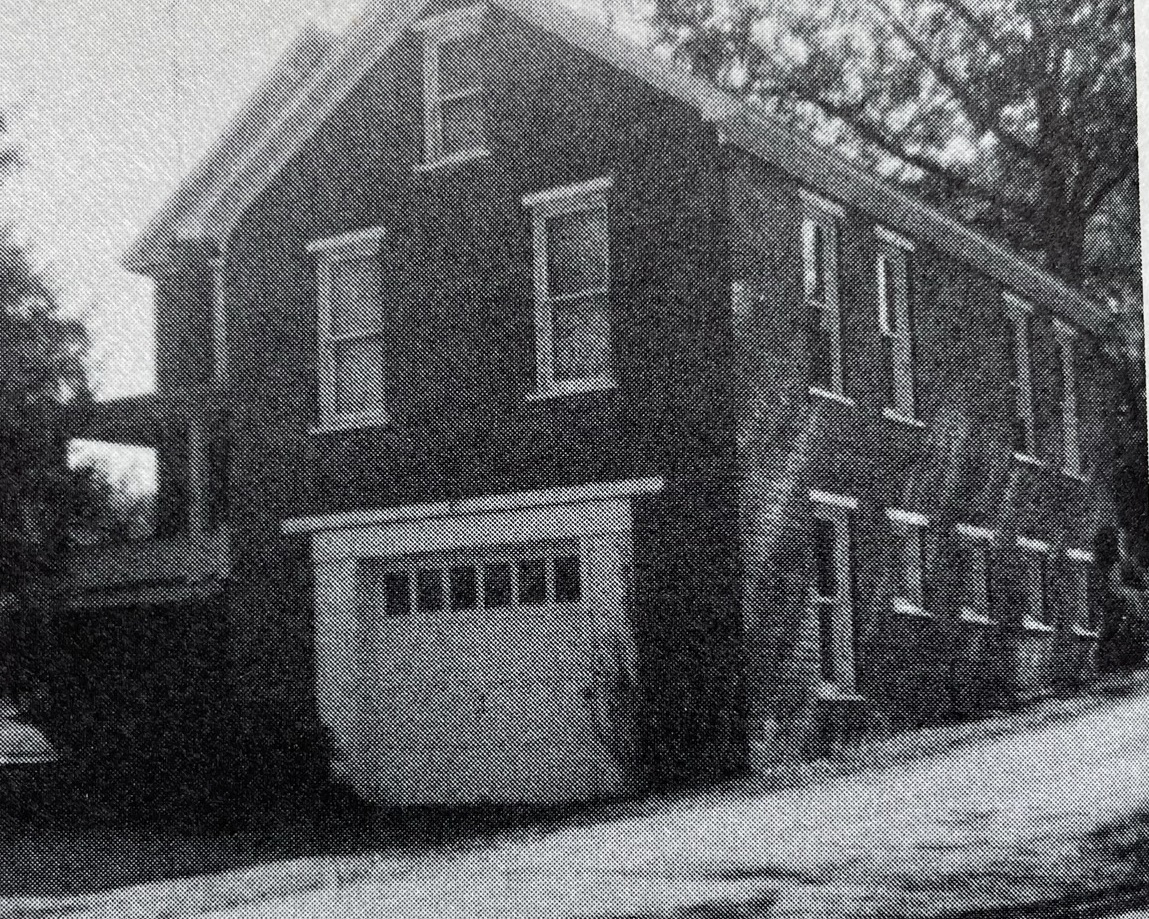 Weaver’s Garage, where meetings were moved after the Grange Hall burned down.
Weaver’s Garage, where meetings were moved after the Grange Hall burned down.
Relocation of Saxton Meetings to Weaver’s Garage
After 5 weeks of meetings in the Grange, a fire (arson) destroyed the building and they relocated to Weaver’s Garage, in East Saxton.
► As converts were multiplied, so was the need for women’s prayer coverings and bonnets. A group of ladies from Lancaster County helped to make them.
► The Ebersoles lived in the apartment above the garage and people were visiting them day and night for spiritual counsel.
► There were preaching services every night, with the women doing as much during the services as the men.
► Many of the people from Saxton walked to the garage every night and arrived back home late at night, yet by the next evening they were ready to make the long walk again.
► Healings were a regular occurrence.
► River baptisms were conducted, even with ice in the river.
► Public confessions were normal. Types of confession:
…• Sexual immorality
…• Moonshining
…• Burning down barns for amusement or for insurance money
…• Theft
Persecution
► The local newspaper wrote that the leaders of the revival should be tarred and feathered and driven out of town.
► People intentionally disrupting services had to be escorted out of the building.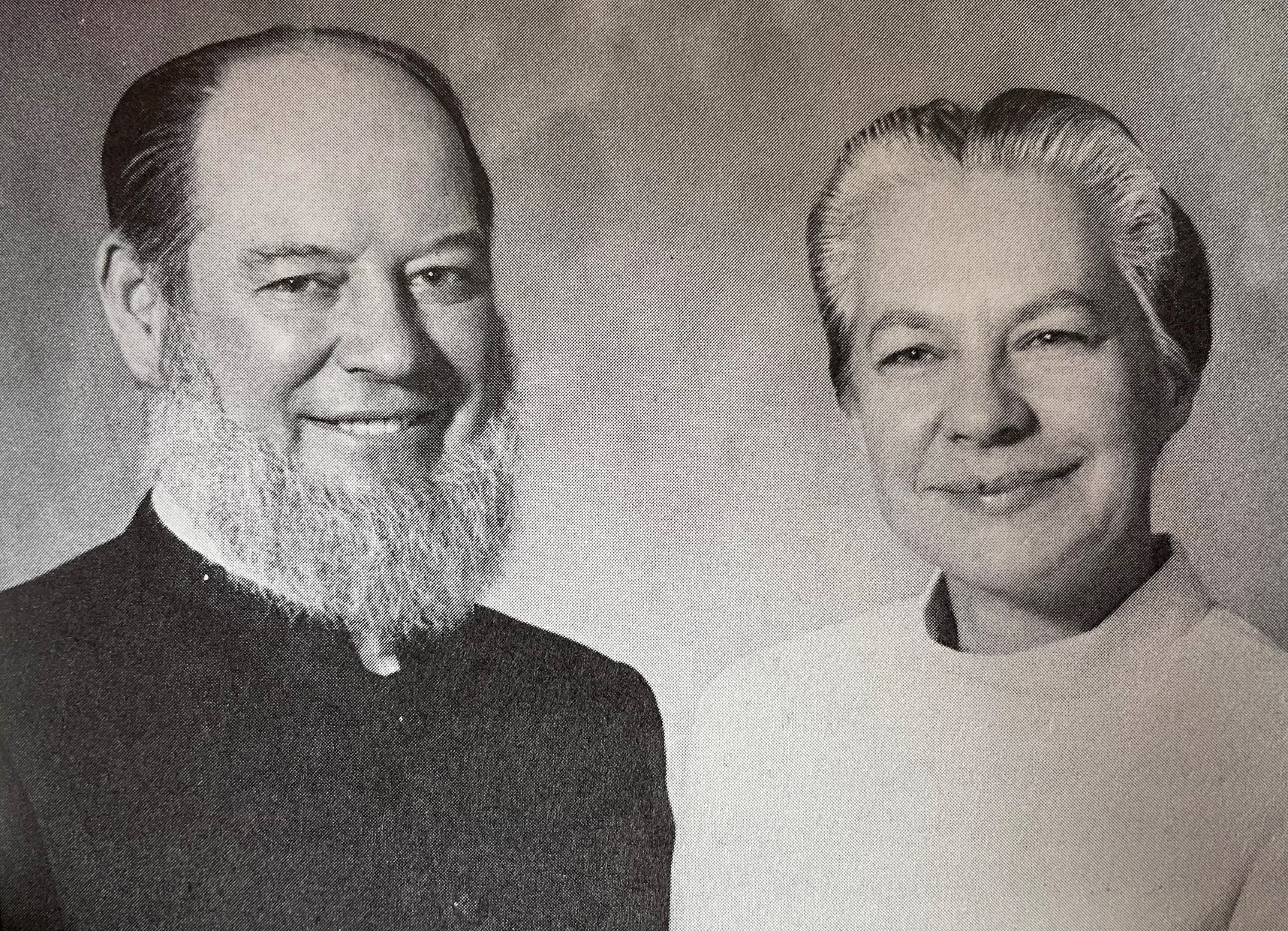
Rev. and Mrs. Ross Morningstar: converts during the revival.
He became a pastor of one of the churches that was started.
Ross Morningstar, of Saxton, attended the meetings at Weaver’s Grove and the Grange Hall, but only to mock and cause disturbances. But while in attendance at the Grange, God arrested his heart and he was converted. Other changes in Morningstar’s life:
► Healed of rheumatism, which led to him not needing crutches anymore.
► Healed of epileptic seizures
► Baptized in the Holy Spirit
► Became a singer and worker during subsequent revival services.
► Became ordained and eventually the minister of the congregation at Hunlock Creek.
Rival Revival
One church in town started their own nightly meetings to rival the one at Weaver’s Garage. The Ebersoles in response closed their meetings and joined with that church. But the plain clothed and demonstrative Brethren in Christ were evidently too much for that church to manage, so they asked them to restart their services.
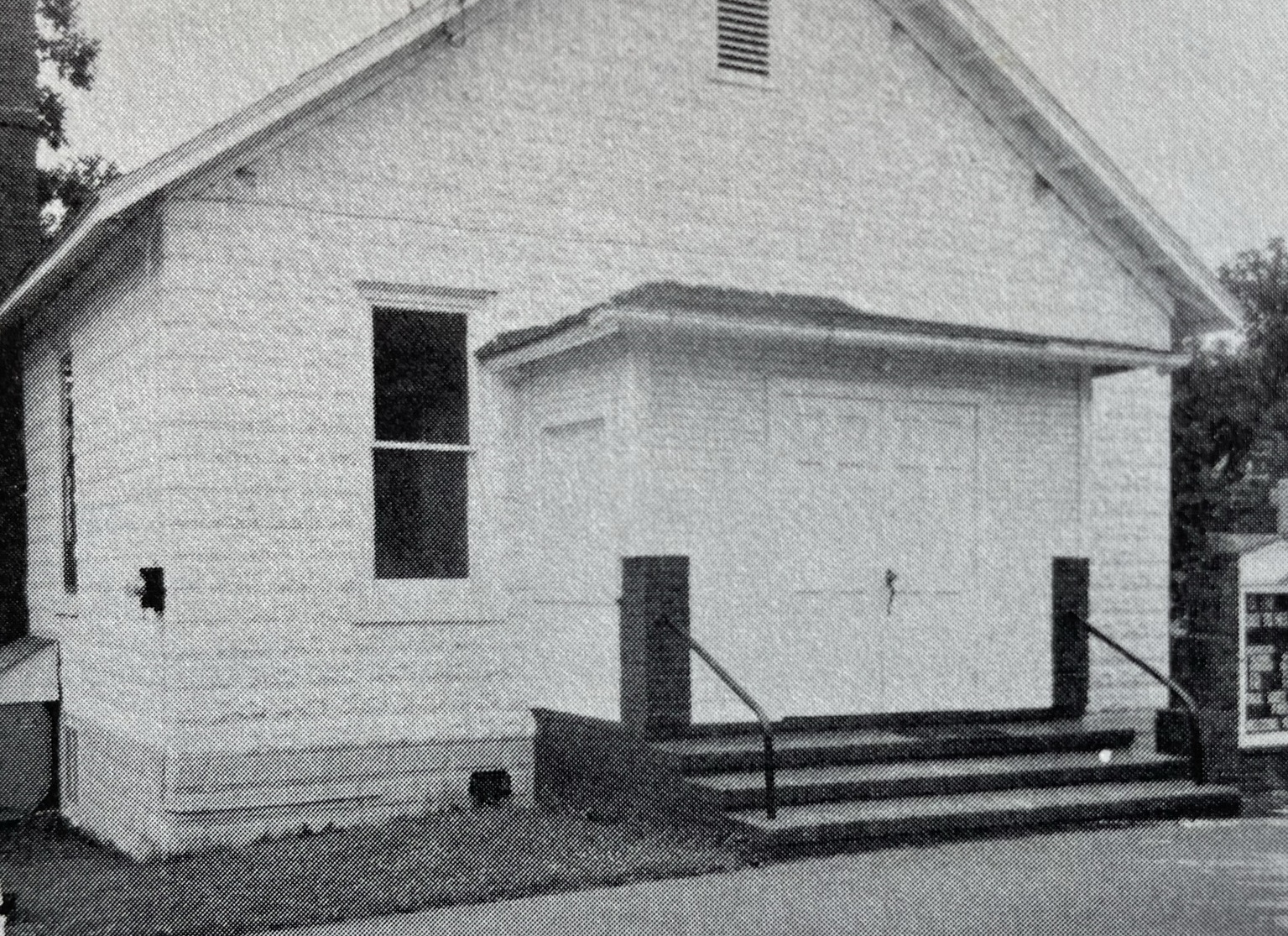
The concrete block church that was constructed – Saxton, PA
With many new converts needing a spiritual home, one that was conducive with the Brethren in Christ’s teachings, Roscoe Ebersole became the pastor of this congregation and a cement block church was built, which the congregation began using on December 3, 1932.
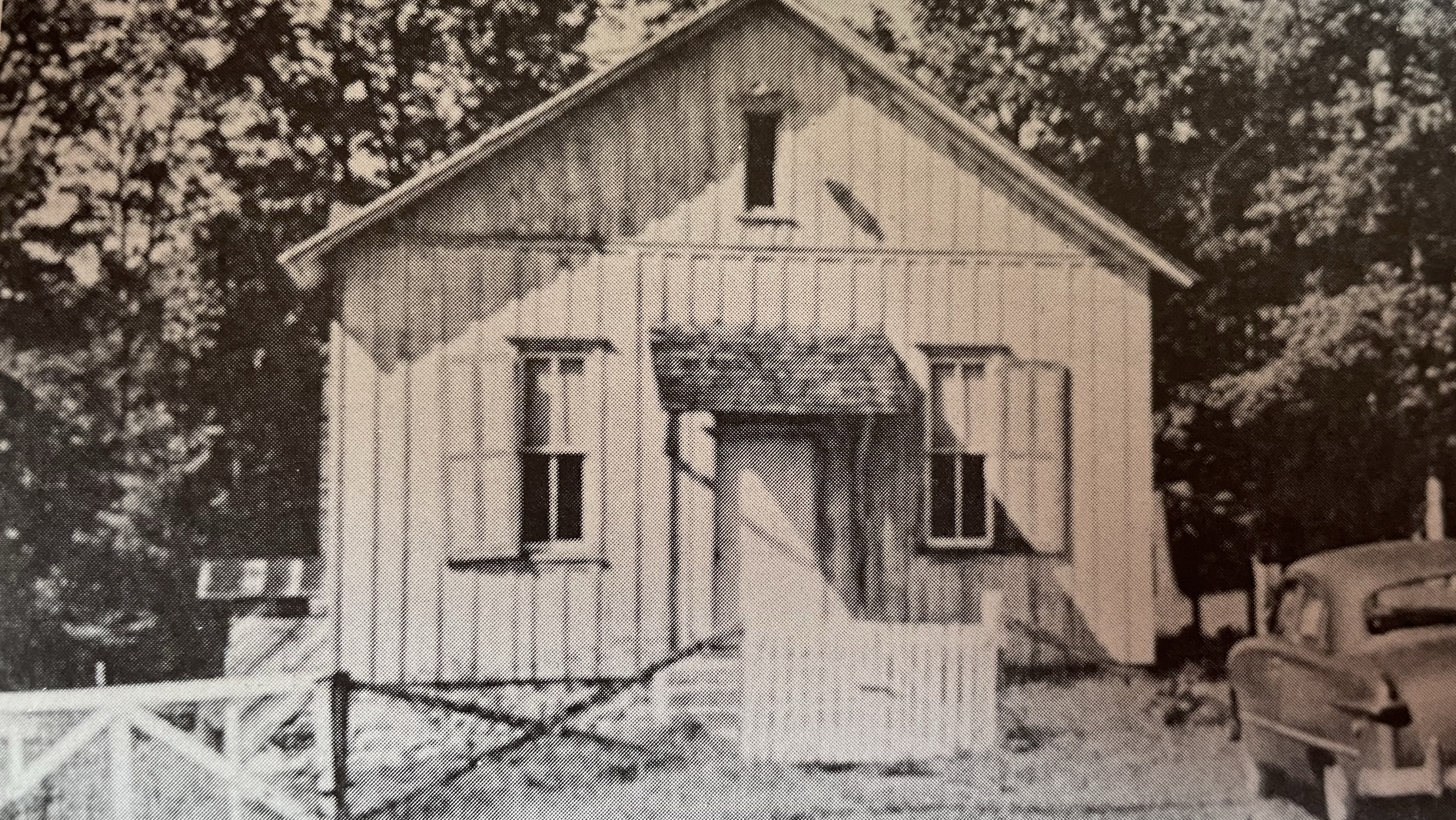
Sherman Valley Church: Location of first meetings
Sherman Valley
About 15 miles to the south of Saxton is Sherman Valley.
A very small church there, with not over 20 members, asked the Saxton team to come and conduct some meetings. Because the Saxton team was too busy, the church asked Herman Miller from Altoona to go there.
During the first week at Sherman Valley, 80 people were converted. There were also many signs accompanying the ministry (Mark 16:17).
► Many healings
► Prostrations
► The “jerks” were reported, which led to two people’s conversion
► Deliverance from demonization
Clear Creek Revival Opposition
When the team started meetings at Clear Creek, in August 1933, the number in attendance reached 500. Even with at least 200 being born again, members of other churches in the area wanted the meetings to end, so much so, that it led to their persecution of the ministry team. Some of the persecution experienced at this location involved:
► Dynamite blasts in the grove where they were holding meetings.
ِ► Trees cut down blocking the road to the meetings.
► Pressure on the owner of the grove to force the meetings off his land.
► Throwing of rotten eggs.
► Shooting of guns into windows where meetings were held.
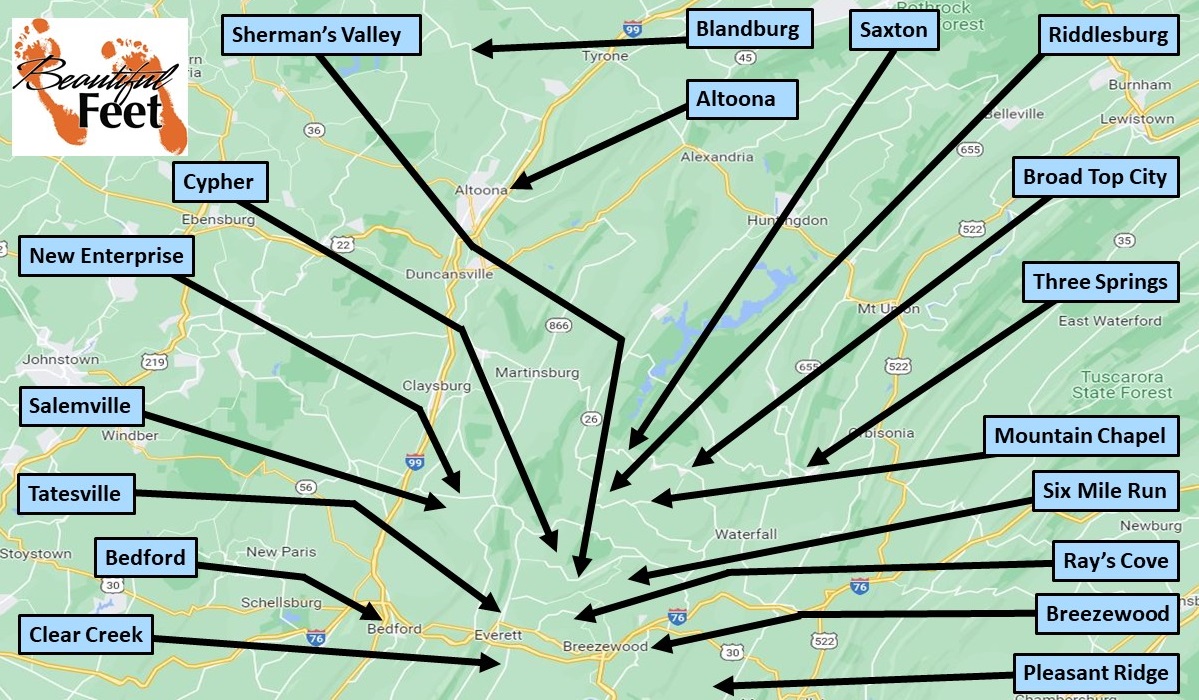
Some of the locations where revival meetings were held (southcentral Pennsylvania)
The Revival Movement Spreads
Throughout the 1930s the revival movement spread as the Finks, Ebersoles, and Miller conducted meetings throughout the mountains. The above image shows some of the locations where these meetings were held.
Results of the Revivals
► Many people were born again.
► Believers were revived.
► Physical healings occurred.
► Restitutions for wrongs were carried out.
► Ministers and missionaries received their callings.
► Churches were established.
► Campgrounds were established
The Brethren in Christ Today
Here are a few of the statistics of the Brethren in Christ today:
► In North America there are around 295 churches.
► In the United States there are around 20,739 members in 232 churches, with most being in Pennsylvania.
► The denomination’s headquarters is in Grantham, Pennsylvania, next to the Grantham BIC Church and Messiah University.
► Globally, there are around 1,100 churches in 23 countries with a worldwide membership of around 80,000
Sources
► An Encyclopedia of Religions in the United States by William B. Williamson
► Fire in the Mountains by E. Morris Sider
► The Holy River of God by Barry L. Callen
► The Small Sects in America by Elmer T. Clark
Return to List of Revival Stories
Chet & Phyllis Swearingen:
Office: (260) 920-8248
romans1015@outlook.com
Beautiful Feet
P.O. Box 915
Auburn, IN 46706

